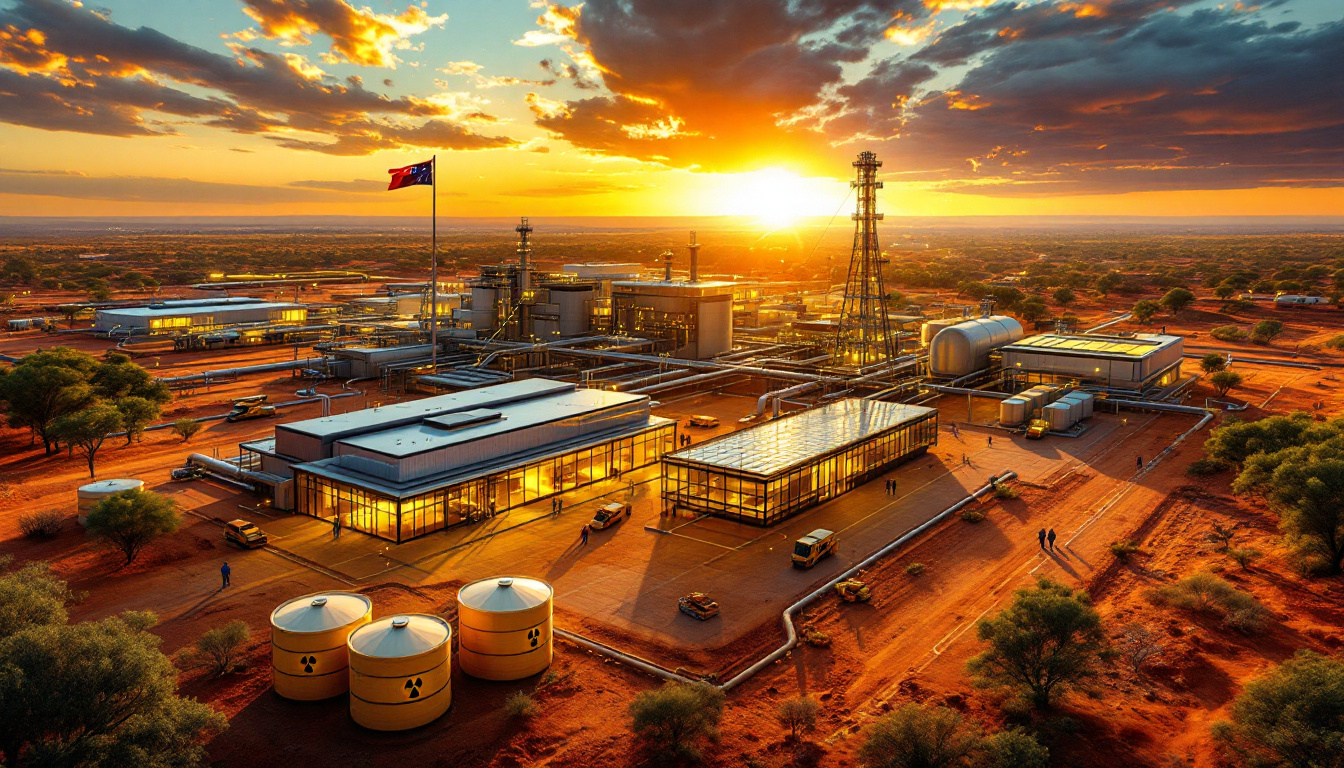Understanding the Battery Metals Investment Landscape
Battery metals have emerged as one of the most compelling investment narratives of the decade, underpinning the global transition toward electrification and renewable energy. These critical materials are the foundation upon which our sustainable future is being built, yet many investors still lack a comprehensive understanding of this complex market. Investing in the global battery metals boom requires careful analysis of supply-demand dynamics, geopolitical considerations, and technological developments.
What Are Battery Metals and Why Are They Important?
Battery metals include lithium, nickel, cobalt, graphite, tin, and aluminum – each playing a crucial role in lithium-ion battery production. These metals are the building blocks for energy storage systems that power everything from smartphones to electric vehicles (EVs) and grid-scale storage facilities.
Lithium-ion batteries typically require 7-10kg of lithium carbonate equivalent per kWh, highlighting the enormous material requirements as production scales. Graphite, often overlooked in discussions about battery metals, actually constitutes 40-50% of total battery weight in lithium-ion systems, making it volumetrically the most significant component. Furthermore, the graphite supply chain risks have become increasingly apparent as demand continues to grow.
As Dr. Sarah Johnson from the Battery Materials Institute notes, "No current battery chemistry eliminates the need for lithium – it remains the electrochemical backbone of our energy transition."
While cobalt and nickel receive significant attention due to supply concerns, tin and aluminum are increasingly recognized as critical components. Tin consumption in soldering accounts for 52% of global usage according to recent International Tin Association data, with EV production requiring significantly more solder points than conventional vehicles. Aluminum's exceptional conductivity (37.7 million Siemens/meter) makes it essential for battery casings, thermal management systems, and increasingly in battery chemistry itself.
How Is the Battery Metals Market Expected to Grow?
The growth trajectory for battery metals is unprecedented, driven primarily by accelerating EV adoption. Global EV sales are projected to reach 16.7% of all light vehicle sales by 2025, representing approximately 15 million units of the expected 89.6 million total vehicles.
Energy storage installations present an equally impressive growth curve, forecast to increase from just 9 GWh in 2018 to a staggering 1,095 GWh by 2040. This 122-fold increase reflects the critical role that stationary storage will play in enabling renewable energy integration into power grids worldwide.
Government policies are providing additional momentum through initiatives like the US Inflation Reduction Act, the European Battery Alliance, and China's ongoing subsidies for electric vehicles. These programs create both push and pull factors – incentivizing EV purchases while simultaneously mandating domestic battery production.
Technology companies are further accelerating demand through data center expansion, 5G implementation, and the proliferation of connected devices. Tesla's 4680 cells use 15% less cobalt through nickel-rich cathodes but still require substantial amounts of lithium, graphite, and aluminum. Meanwhile, CATL's new Qilin battery achieves 255Wh/kg using lithium-silicon anodes, demonstrating how innovation continues to reshape material requirements.
Geopolitical Factors Shaping the Battery Metals Market
The geopolitical landscape surrounding battery metals has emerged as perhaps the most significant factor influencing investment decisions in this sector. Understanding these dynamics is crucial for identifying companies positioned to benefit from government support and supply chain realignments.
Why Is China's Dominance a Concern?
China's strategic foresight in securing battery metal supply chains has resulted in overwhelming dominance across the value chain. Chinese companies control 58% of global lithium chemical production and 72% of cathode manufacturing, creating significant vulnerabilities for Western automotive and technology companies.
This concentration of processing capacity represents a national security concern for countries pursuing electrification goals. Dan Blondal, CEO of Nano One Materials, captured this sentiment precisely: "We have to figure out how to decouple from China because they can cut supply chains off willy-nilly."
Mining analyst Mark Bristow revealed, "Our due diligence shows 68% of African lithium projects have Chinese offtake agreements," illustrating how China's influence extends well beyond its borders. This control extends across multiple metals – from graphite (where China produces over 90% of the material used in battery anodes) to rare earths required for EV motors.
The concentration risk became acutely apparent during recent trade tensions, with battery metal prices fluctuating wildly based on political statements rather than fundamental supply-demand balances.
How Are Governments Responding to Supply Chain Risks?
Western governments have launched unprecedented initiatives to reshore and friend-shore battery supply chains. The US Inflation Reduction Act provides a substantial $45/kWh battery production tax credit through 2032, creating compelling economics for domestic manufacturing.
The European Union has implemented its Critical Raw Materials Act, which requires 15% domestic recycling by 2030 and establishes strategic targets for reducing import dependency. These initiatives are complemented by the United States-Mexico-Canada Agreement (USMCA), which requires 75% of battery components to originate from North America to qualify for tax credits.
Canada has positioned itself as a particularly important player, leveraging abundant natural resources and clean hydroelectric power to attract investment. Piedmont Lithium's $1 billion investment in a Quebec lithium hydroxide plant exemplifies this trend. Meanwhile, the Pentagon has launched a $500 million battery material reserve program, prioritizing nickel as indicated in recent defense reports.
Blockchain tracking systems offer a technological solution to supply chain verification, with pilot programs demonstrating a 37% reduction in gray-market cobalt entering legitimate supply chains. In addition, Indonesia's 2025 nickel ore quota reflects the balancing act between environmental concerns and economic priorities in key battery metal producing nations.
Key Investment Opportunities in Battery Metals
The battery metals investment landscape offers diverse entry points across the value chain, from mining and processing to recycling and advanced material development.
Which Battery Metals Offer the Best Investment Potential?
Lithium remains the cornerstone investment in the battery metals space, with demand growth outpacing production capacity despite recent price corrections. While lithium is irreplaceable in current battery chemistries, the form (carbonate versus hydroxide) and quality requirements continue to evolve, creating opportunities for specialized producers. Recent advances in lithium production technologies are transforming how this critical metal is extracted and processed.
Nickel presents a compelling investment case, particularly for Class 1 high-purity material required for high-energy-density batteries. Indonesia's nickel export ban has stimulated over $12 billion in HPAL (High Pressure Acid Leach) investments since 2020, but environmental concerns and technical challenges persist with these operations.
Cobalt investment thesis has moderated as manufacturers work to reduce dependence on this costly and ethically problematic metal. However, complete elimination remains technically challenging, and cobalt's importance for stability and performance ensures ongoing demand.
Graphite represents the largest volume opportunity by weight, with natural and synthetic sources competing for market share. Innovation in graphite purification, with hydrogen reduction processes cutting costs by 33%, is improving economics for Western producers.
High-purity alumina (HPA) is emerging as a critical battery material, with demand growing at a 17.8% CAGR through 2030 according to Impact Minerals' pre-feasibility study. As Peter Unsworth from Impact Minerals stated, "High-purity alumina under 50ppm impurities increases separator safety by 300%," highlighting its role in preventing thermal runaway.
What Are the Most Promising Battery Technology Trends?
Lithium Iron Phosphate (LFP) cathodes have experienced a renaissance due to their lower cost, improved safety, and elimination of cobalt. Nano One's "one pot" process reduces cathode production steps from 11 to 3, demonstrating how manufacturing innovation can reshape competitive dynamics.
Solid-state batteries represent the next frontier, with ceramic electrolytes requiring aluminum oxide purity exceeding 99.99%. These batteries promise 70-100% higher energy density while dramatically improving safety profiles, though commercialization timelines remain uncertain.
Sodium-ion batteries are gaining traction as a partial substitute for lithium-ion in less demanding applications. These batteries use 40% less lithium but require three times more aluminum, potentially reshaping metal demand profiles.
Silumina Anodes technology, being developed by Altech Batteries, demonstrates how incremental innovations can deliver substantial performance improvements. This technology boosts energy density by 29% through specialized ceramic coatings on silicon particles.
Evaluating Battery Metal Investment Opportunities
Successfully navigating the battery metals landscape requires a disciplined approach to evaluating investment opportunities. Specific metrics and considerations separate potential winners from the broader field.
What Factors Should Investors Consider When Selecting Battery Metal Stocks?
Production location has emerged as perhaps the most critical factor in battery metals investing. Companies operating outside China gain strategic advantages through access to Western subsidies, reduced geopolitical risk, and premium pricing from manufacturers seeking supply chain diversification.
Environmental footprint now directly impacts valuation, with ESG-compliant producers commanding 12-18% valuation premiums compared to peers with higher carbon or water intensity. This advantage is particularly pronounced for companies serving European and North American markets.
Technological innovation provides a crucial competitive edge. Advanced sorting technology can reduce hard rock lithium processing costs by 18%, while HPAL nickel projects now require $12-15k/ton capital intensity compared to $25k for traditional sulfide operations.
Financial strength remains paramount in a capital-intensive industry. Junior miners typically require $85-120 million in capital expenditure per 10,000 tonnes of annual lithium production capacity, creating significant barriers to entry without strong balance sheets or strategic partners.
Battery metal equities currently trade at an average EV/EBITDA multiple of 8.7x compared to 14.3x for technology companies, potentially indicating relative value despite near-term price volatility. As one Morgan Stanley analyst noted, "Our discounted cash flow models show 2028 lithium surplus priced in by Q4'25," suggesting current valuations may already incorporate bearish supply scenarios.
Which Companies Are Well-Positioned in the Battery Metals Space?
Nano One Materials represents a technological approach to battery metal investing, with its proprietary one-pot process for cathode production securing $60 million in non-dilutive funding. The company's ability to produce LFP cathodes with fewer steps addresses both economic and environmental concerns.
Rome Resources has positioned itself in the often-overlooked tin sector, with exploration in the Democratic Republic of Congo revealing increasing grades at depth. The company's upcoming maiden resource estimate could catalyze revaluation given tin's essential role in electronics and soldering for EV production.
Impact Minerals is advancing its Lake Hope high-purity alumina (HPA) project with a recent $5.2 million capital raise. This specialized material commands premium pricing and faces less competition than mainstream battery metals.
Altech Batteries is consolidating ownership in two innovative technologies: CERENERGY sodium chloride solid-state batteries and Silumina Anodes. The company's diversified approach provides exposure to both current and next-generation battery technologies.
Metro Mining exemplifies the operational approach, with its Australian bauxite production achieving record volumes and improved margins. The company benefits from aluminum's growing importance in battery applications while generating current cash flow.
Sustainable Production and ESG Considerations
Environmental and social governance factors are increasingly central to battery metals investing, with sustainable production methods becoming both ethical imperatives and competitive advantages.
How Important Is Sustainability in Battery Metal Production?
Sustainability has transitioned from a marketing advantage to a fundamental business requirement in battery metals. Direct lithium extraction technologies reduce water usage by 78% compared to traditional evaporation ponds, addressing a principal environmental concern in regions like Chile's Atacama Desert.
Low-carbon aluminum premiums have reached $45/ton in European spot markets, creating tangible financial incentives for producers with clean energy sources. As a CRU analyst noted, "Hydro-powered aluminum smelters achieve 75% lower Scope 2 emissions," creating significant competitive advantages as carbon border adjustments take effect.
Metso Outotec's alkali roasting process achieves 94% lithium recovery while substantially reducing chemical consumption compared to conventional acid leaching. Meanwhile, Elysis's inert anode technology eliminates all direct CO2 emissions from aluminum smelting, representing a step-change in environmental performance.
These innovations are reflected in company positioning, with Livent's Salar Hombre Muerto operation achieving 50% lower water intensity than peers, and Glencore incorporating 58% recycled content in its European battery supply chains. The development of Europe's battery recycling revolution is creating new opportunities for sustainable supply chains.
What Are the Environmental Challenges in Battery Metal Mining?
Water usage remains the most contentious issue in lithium production, with conventional brine operations consuming 500,000 liters per tonne of lithium carbonate. Hard rock mining offers better water efficiency but requires significantly more energy and chemical inputs.
Land disturbance varies dramatically by production method, with conventional mining requiring extensive physical footprints compared to in-situ recovery methods. Progressive reclamation practices are becoming standard, though legacy issues persist at older operations.
Energy intensity presents a particular challenge for material processing, with graphite purification and lithium hydroxide conversion historically requiring substantial thermal energy. Innovation in conveyor belt sintering has reduced LFP cathode energy use by 22kWh/ton, demonstrating how process improvements can address this concern.
Battery recycling technology has advanced significantly but remains volumetrically limited by the availability of end-of-life batteries. Current technologies recover 92% of cobalt but only 35% of lithium, highlighting the need for continued innovation in recovery methods.
Battery Metals Investment Strategy
Developing an effective investment strategy requires balancing near-term market realities with long-term structural growth trends in the battery metals sector.
How Should Investors Approach the Battery Metals Sector?
Successful battery metals investing requires a balanced portfolio approach encompassing different metals, value chain positions, and risk profiles. Electric vehicle battery demand is growing at a 27% CAGR compared to 19% for stationary energy storage, highlighting the importance of understanding end-market exposure.
Investors should recognize that midstream processing accounts for 42% of battery value chain profits, often providing better risk-adjusted returns than mining operations. Companies with proprietary processing technologies frequently command higher valuations while requiring less capital intensity.
Geopolitical factors increasingly influence performance, with Western governments explicitly supporting domestic production through subsidies, offtake agreements, and trade policies. Projects aligned with these national security interests receive preferential access to capital and expedited permitting.
Technological innovation can rapidly reshape metal requirements, as demonstrated by the industry's ongoing efforts to reduce cobalt content. As MIT researchers recently noted, "Dendrite suppression technology could boost copper demand 14% in batteries," highlighting how emerging technologies can create new demand vectors.
The most successful investors maintain exposure across multiple battery chemistries rather than attempting to predict winners, recognizing that different applications will require different performance characteristics.
What Are the Risks of Investing in Battery Metals?
Price volatility represents the most immediate risk, with lithium prices fluctuating over 300% in recent years. Tin futures contango has narrowed to £180/ton from £420 earlier in 2024, demonstrating how quickly market sentiment can shift.
Technological disruption poses existential risks to certain materials, though complete substitution remains unlikely for core metals like lithium and graphite. Quantitative models from Goldman Sachs suggest nickel equities are currently pricing in an $18,000/ton long-term price, potentially creating value if technological substitution occurs more slowly than anticipated.
Project development timelines frequently exceed initial estimates by 40-60%, with permitting delays, technical challenges, and capital availability creating significant execution risk. Junior miners face particular challenges in this regard, especially when developing projects in jurisdictions with limited infrastructure.
Recycling will eventually create a circular materials loop, though this remains a distant prospect given battery longevity and growing total demand. Battery recycling economics improve from -15% to +22% ROI at $150/tonne LCE prices, indicating that higher prices will accelerate recycling adoption.
FAQs About Battery Metals Investing
Which Battery Metal Has the Strongest Growth Potential?
Lithium maintains the strongest overall growth trajectory due to its irreplaceable role in all lithium-ion chemistries. However, high-purity manganese sulfate could see the highest percentage growth from a smaller base as NMC cathode adoption increases in mid-market vehicles.
How Will Recycling Impact the Battery Metals Market?
Recycling will create an increasingly important secondary supply source, potentially meeting 25-30% of demand by 2035. However, the exponential growth in total battery production means primary mining requirement continues to increase despite improved recycling rates.
What Impact Will New Battery Technologies Have on Metal Demand?
Solid-state batteries will likely increase demand for ultra-high-purity lithium while potentially reducing cobalt and nickel requirements. Sodium-ion batteries may capture 15-20% market share in stationary storage and low-cost vehicles, creating incremental aluminum demand while moderating lithium growth.
How Can Retail Investors Gain Exposure to Battery Metals?
Beyond direct investment in mining
Want to Spot the Next Major ASX Mining Discovery?
Stay ahead of the market with Discovery Alert's proprietary Discovery IQ model, delivering instant notifications of significant mineral discoveries directly to your inbox. Visit the dedicated discoveries page to see why historic ASX mining discoveries have generated exceptional returns for early investors, and begin your 30-day free trial today.




